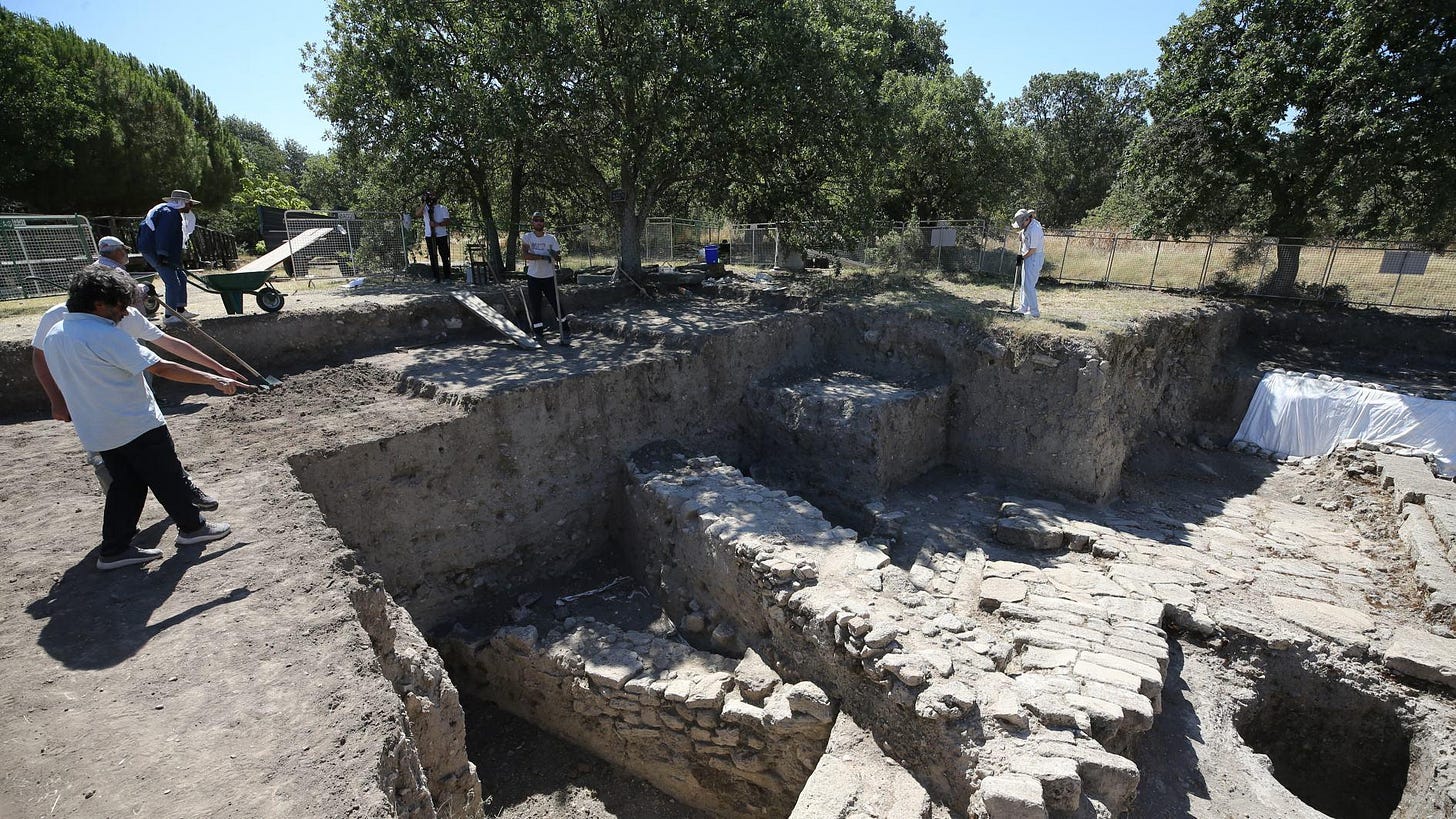Artifacts of Trojan War revealed during excavations at Troy
Latest News
Reported by Hurriyet Daily News:
Archaeologists are continuing excavations at the ancient city of Troy in the northwestern province of Çanakkale, a UNESCO World Heritage site with a history of 5,500 years, aiming to uncover new evidence connected to the legendary Trojan War.
The ongoing 2025 excavation season is conducted in collaboration with the Governorship of Çanakkale, Çanakkale Onsekiz Mart University and Tevfikiye village administration.
Led by archaeologist and academic Rüstem Aslan, this year’s excavations focus on accessing the destruction layer of the Late Bronze Age, largely associated with the Trojan War, to uncover artifacts linked to warfare.
Despite being early in this season’s work, the team has already discovered 3,500-year-old sling stones in front of a palace structure dating to Troy Phase 6. These finds offer valuable insights into Bronze Age defense and attack strategies.
Aslan told the state-run Anadolu Agency that this year’s works under the “Legacy for the Future Project” will focus on two separate excavation areas.
Referring to earlier discoveries from the Late Bronze Age — often identified as “Homer’s Troy” — that include arrowheads and weapons found near the palace and city walls, Aslan said the goal is to reach the destruction layer associated with the war.
Noting that the Trojan War has fascinated archaeologists since the 19th century, inspiring decades of research to uncover concrete evidence of the conflict, over the last three to four years, studies focusing on this period have intensified.
Aslan emphasized that Troy is a multi-layered mound preserving remains from many eras, including skeletons from the Eastern Roman period and artifacts from later occupations found in previous excavations.
Archaeological research at Troy began in 1863 with Frank Calvert and continued officially with Heinrich Schliemann in 1871, followed by Wilhelm Dorpfeld and Carl Blegen.
Aslan shared that identifying clear traces of war in archaeology remains to be a significant challenge. Excavations led by Carl Blegen in the 1930s and Manfred Osman Korfmann in the 1980s revealed a burnt destruction layer dating to the Late Bronze Age, around 1200 B.C., in Troy’s layers 6 and 7. The presence of skeletons, weapons and other remains within this layer suggests war-related devastation.
In recent years, preliminary evidence of another destruction layer has emerged between the agora, the palace, and the defensive walls.
Aslan said the team is searching for clues such as weapons embedded in fire layers and hastily buried skeletons — telltale signs of conflict and destruction.
Read more here.



